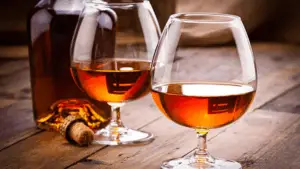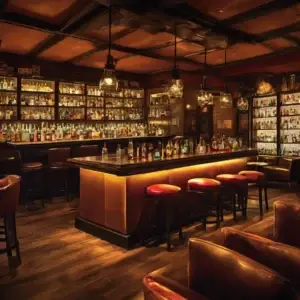In the rolling hills of Aberdeenshire, Scotland, where the air carries the scent of oak and malt, stands one of the country’s most revered whisky producers. The GlenDronach Distillery, founded in 1826, remains a cornerstone of Highland whisky heritage. Its story is one of resilience, craftsmanship, and devotion to the sherry cask tradition that has made its name legendary among single malt enthusiasts worldwide.
Origins of a Highland Pioneer
The history of GlenDronach begins with James Allardice, who officially established the distillery on the grounds of Boynsmill in 1826. The estate’s name would later change to Glen House, the heart of what would become one of Scotland’s first licensed distilleries. At a time when illicit whisky production still dominated the Highlands, Allardice’s decision to go legitimate marked a turning point in the region’s transition to lawful, high-quality whisky-making. His pioneering spirit helped shape the very foundation of the modern Scotch industry.
Expansion and the Early Golden Years
In 1830, ownership passed to Walter Scott, a native of Teaninich, whose tenure signaled a new era of growth. Under his guidance, GlenDronach Distillery expanded production and influence, becoming one of the largest operations in the Highlands by the 1860s. It was more than a workplace; it was a self-sustaining community. More than fifty people lived and worked around the distillery, forming a village that revolved entirely around whisky. The sense of purpose and pride born in those years would continue to define GlenDronach’s identity for generations.
The Grant and Teacher Legacy
In 1920, the distillery was purchased by Captain Charles Grant, the son of Glenfiddich’s founder William Grant. This transfer brought together two of the most respected names in Scotch whisky and elevated GlenDronach’s reputation further. Four decades later, in 1960, William Teacher & Sons acquired the distillery and embarked on a modernization phase. The number of stills doubled from two to four, a move that increased annual output while preserving the rich, traditional character that had defined the whisky since its inception. This expansion transformed GlenDronach into a producer of both scale and sophistication, admired across the industry.
Revival and Modernization
The late twentieth century was a turbulent time for many Scotch distilleries, and GlenDronach was no exception. In 1996, production halted temporarily under Allied Distillers, casting uncertainty over its future. Fortunately, the pause was short-lived. When the stills roared back to life in 2002, they did so with renewed purpose. In 2005, the distillery transitioned from coal-fired to steam-heated stills, modernizing its operation while remaining one of the last Highland producers to make this change. The update preserved the spirit’s consistency and purity without sacrificing the depth for which GlenDronach was renowned.
The Art of Sherry Cask Maturation
What truly defines The GlenDronach Distillery is its unwavering devotion to sherry cask ageing. From its earliest years, the distillery has drawn inspiration from Andalusian sherry producers, sourcing casks seasoned with Oloroso and Pedro Ximénez wines. These casks impart the distinctive aromas and flavors that have become synonymous with the GlenDronach name — dried fruits, dark chocolate, roasted nuts, spice, and leather.
In an age when many distilleries turned to bourbon casks for cost efficiency, GlenDronach held firm to its identity. Its patience and fidelity to the sherry tradition built a loyal following among whisky purists who value richness, complexity, and authenticity. The practice has often earned GlenDronach comparisons with The Macallan, yet its deeper, darker style and commitment to long aging have given it a distinct personality all its own.
Innovation and Expansion in the Modern Era
While tradition defines its core, GlenDronach continues to innovate thoughtfully. In recent years, the distillery introduced limited peated expressions, subtly weaving smokiness into its famously full-bodied profile. These experiments showcase GlenDronach’s ability to evolve without compromising its essence.
The distillery’s next chapter began in 2008 when it became part of BenRiach Distillery Company Ltd, marking the start of a revitalization that brought global attention. In 2016, GlenDronach joined the Brown-Forman Corporation family, alongside BenRiach and Glenglassaugh, ensuring access to international resources while protecting the authenticity of its Highland roots.
Production and Signature Expressions
Today, The GlenDronach Distillery produces more than 1.4 million litres of spirit per year, crafted from four stills — two wash stills and two spirit stills. Each batch continues to reflect the distillery’s founding principles of quality and integrity. Its core range has become emblematic of sherried Scotch whisky, with expressions such as the GlenDronach 12 Original, 15 Revival, and 18 Allardice representing benchmarks of style and structure. Each bottle captures the depth and texture that define the GlenDronach legacy, balancing intensity with elegance.
Nearly two centuries after its founding, GlenDronach Distillery remains a symbol of endurance and excellence. The whisky continues to mature patiently in the same style envisioned by James Allardice, shaped by the land, the casks, and the craftspeople who carry the torch forward. For the Barlist community, GlenDronach stands as one of Scotland’s true masters of maturation, where time, oak, and tradition converge to create a spirit that feels both ancient and alive.


